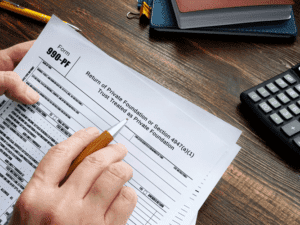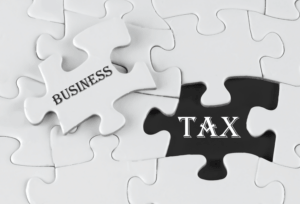Again, the left (debit) and right (credit) sides of the journal entry should agree, reconciling to zero. Manually preparing a bank reconciliation monthly can become exhaustive and time-consuming fast. That’s why most businesses choose to invest in accounting software that automates almost every part of their bank reconciliation process. The first entry records a debit to the cash account and a credit to the bank reconciliation account.
- This balance exists when the deposits made by your business at your bank are more than the withdrawals.
- Journal entries, also known as the original book of entries, refer to the process of recording transactions as debits and credits.
- During bank reconciliation, you’ll compare the two accounts to ensure they reflect the same transaction details and cash flow amounts.
- Comparing deposits during a bank reconciliation is crucial to maintain financial accuracy and prevent potential overdrawn accounts.
- It is helpful for a company to have a separate general ledger Cash account for each of its checking accounts.
- When a company writes a check, the company’s general ledger Cash account is credited (and another account is debited) using the date of the check.
Otherwise, you could end up spending cash you don’t own, or holding back from potential investments and financial growth. Frequent bank reconciliations confirm your accounts match up, which allows you to properly track your cash flow and as a result, make sensible financial decisions. The purpose of the bank reconciliation is to be certain that the company’s general ledger Cash account is complete and accurate. With the true cash balance reported in the Cash account, the company could prevent overdrawing its checking account or reporting the incorrect amount of cash on its balance sheet. The bank reconciliation also provides a way to detect potential errors in the bank’s records.
It could be that a cheque never cleared or was cashed illegally, for example. Comparing deposits during a bank reconciliation is crucial to maintain financial accuracy and prevent potential overdrawn accounts. This process helps to ensure all recorded transactions match your bank statement. First and foremost, bank reconciliation matters because it helps you get a real view of your business’s finances. When you review your books, it’s important that what you’re reading reflects reality.
For simplicity, our examples and discussion assume that the company has only one checking account with one general ledger account entitled Cash. You can earn our Bank Reconciliation Certificate of Achievement when you join PRO Plus. To help you master this topic and earn your certificate, you will also receive lifetime access to our premium bank reconciliation materials. These include our visual tutorial, flashcards, cheat sheet, quick tests, quick test with coaching, and more.
The statements give companies clear pictures of their cash flows, which can help with organizational planning and making critical business decisions. Bank reconciliation is like solving a puzzle – you gather the pieces, compare them, investigate any differences, make adjustments, and update your records to achieve balance. It’s essential for individuals and businesses alike to stay on top of their financial health. Remember that items such as outstanding checks do not need be recorded into the G/L since they are already there.
This procedure compares the cash balance shown on the company’s books with the amount that should be present in the bank account, considering outstanding deposits and withdrawals. Any discrepancies discovered during this process can then be addressed. Bank reconciliations may not be the most exciting topic, but they are essential for accounting. In essence, bank reconciliation is the process of comparing your company’s bookkeeping records with the actual transactions that have taken place in your bank account.
Compare checks and adjust bank’s total
You may miss errors or fraudulent activities on your statements, resulting in incorrect balances or even financial losses. Failing to reconcile can make it challenging to track expenses accurately or identify cash flow issues. Completing a bank reconciliation entails matching the balances on your bank statement with the corresponding entries in your accounting records. The process can help you correct errors, locate missing funds, and identify fraudulent activity. Account reconciliation is particularly useful for explaining any differences between two financial records or account balances. Some differences may be acceptable because of the timing of payments and deposits.
- Below is a video explanation of the bank reconciliation concept and procedure, as well as an example to help you have a better grasp of the calculation of cash balance.
- This ensures everything matches up and helps you find any mistakes that need to be considered.
- Bank reconciliation is a type of account reconciliation that matches bank statements with the cash book, or general ledger, of a company.
- Therefore, while preparing a bank reconciliation statement you must account for any fees deducted by the bank from your account.
- Another way of performing a reconciliation is via the account conversion method.
It’s true that most accounting software applications offer bank connectivity, which can speed up the reconciliation process immensely. However, connecting your accounting software to your bank or financial institute does not take the place of doing a month-end bank reconciliation. All you need to do bank reconciliation is a copy of your business accounts and a list of bank transactions from the same time period. In this guide, we’ll understanding s corporations walk you through all of the accounting information and steps you need to know, in order to prepare bank reconciliations for your business’s accounting. Manual bank account reconciliation means accountants rely heavily on spreadsheets and other manual methods for financial reporting. For instance, if you haven’t reconciled your bank statements in six months, you’ll need to go back and check six months’ worth of line items.
What is the difference between the first and second entries?
For instance, it may happen that you make an invoice payment to a supplier by check, and they tamper with it by increasing the withdrawal amount. This type of inconsistency would show up in your bank reconciliation statement. When it comes to corporations and big companies, there’s usually an accounting department that’s already looking over numbers to make sure accounting reports match reality. Reconciling your bank statements won’t stop fraud, but it will let you know when it’s happened. Therefore, when your balance as per the cash book does not match with your balance as per the passbook, there are certain adjustments that you have to make in order to balance the two accounts.
A Guide to Everything You Need to Know About Bank Reconciliations
The very purpose of reconciling bank statements with your business’s cash book is to ensure that the balance as per the passbook matches the balance as per the cash book. Bank reconciliation is the process of matching the bank balances reflected in the cash book of a business with the balances reflected in the bank statement of the business in a given period. Such a process determines the differences between the balances as per the cash book and bank passbook. All deposits and withdrawals undertaken by the customer are recorded both by the bank as well as the customer.
Adjusting Journal Entries
Once solved, be sure to adjust your records to reflect deposits as needed. Next, check to see if all of the deposits listed in your records are present on your bank statement. Whatever method you prefer, it’s important to keep solid records of every transaction to reconcile your bank account properly. After adjusting the balance as per the cash book, make sure that you record all adjustments in your company’s general ledger accounts. Once you have incorporated the adjustments in the bank reconciliation statement, you have to ensure that the totals of both sides mentioned at the bottom match.
If you’re finding withdrawals that aren’t listed on the bank statement, do some investigation. If it’s a missing check withdrawal, it’s possible that it hasn’t been cashed yet or wasn’t cashed by the statement deadline. Once the adjusted balance of the cash book is worked out, then the bank reconciliation statement can be prepared. In this way, the number of items that cause the difference between the passbook and the cash book balance gets reduced.
Why is it important to reconcile your bank statements?
For instance, if a vendor tampered with a check, making the withdrawn amount larger than agreed, this discrepancy would show when reconciling your bank statement. Equally, if a business partner took a larger portion of money from a shared account than they recorded in the books, a bank reconciliation would reveal this. Similarly, when a business receives an invoice, it credits the amount of the invoice to accounts payable (on the balance sheet) and debits an expense (on the income statement) for the same amount. When the company pays the bill, it debits accounts payable and credits the cash account.
Bank reconciliations may be tedious, but the financial hygiene will pay off. For a more detailed and thorough illustration of a bank reconciliation and to learn the related terminology, be sure to see our topic Bank Reconciliation. Here’s an example of how By the Bay Contracting’s bank reconciliation would look.
Print out the documents, place checkmarks next to the deposits that agree both in the bank statement and in the company’s general ledger, and take note of any differences. If you often make deposits into your bank account, it’s important that you compare your bank account deposits with those reported into your general ledger. Keep in mind that banks can make mistakes too, so make sure to check both documents for possible errors. However, the depositor/customer/company credits its Cash account to decrease its checking account balance. Bank Example 2 showed that the bank debits the depositor’s checking account to decrease the checking account balance (since this is part of the bank’s liability Customers’ Deposits).



